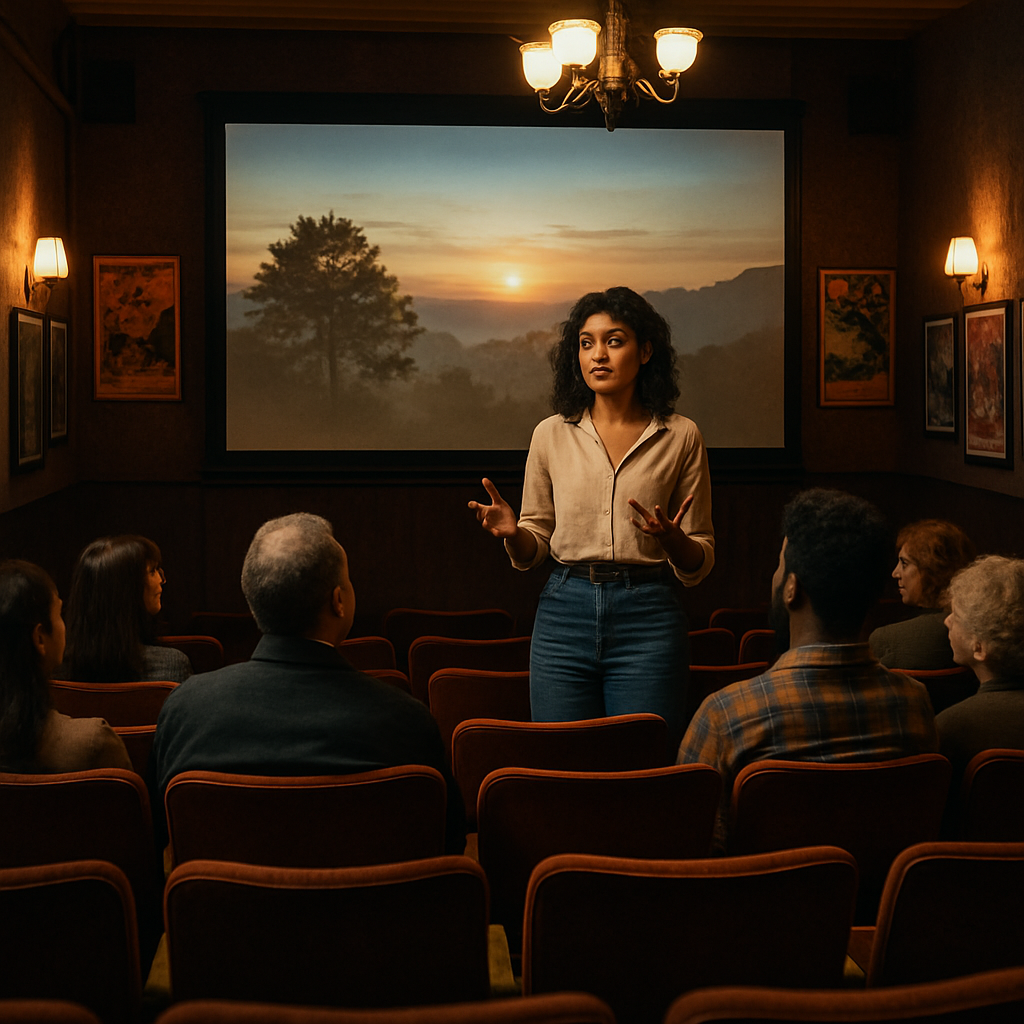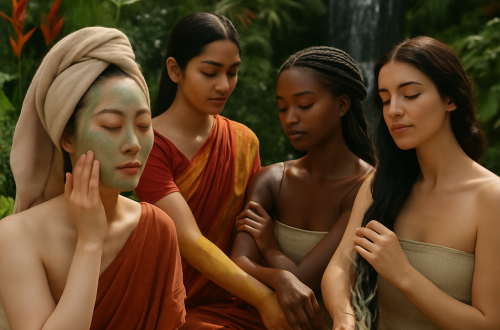The Silent Revolution How Indie Films Are Reshaping Hollywood

For decades, Hollywood dominated the cinematic landscape with its blockbuster formulas and star-driven vehicles. Studios wielded immense power, deciding which stories reached audiences and which remained untold. But beneath this glossy surface, a quiet revolution has been brewing. Independent filmmakers, armed with digital cameras and boundless creativity, have steadily challenged the status quo, forcing an industry resistant to change to reconsider its fundamental approach to storytelling.
The landscape of American cinema has transformed dramatically over the past twenty years. What began as a fringe movement of scrappy filmmakers working outside the system has evolved into a formidable creative force that regularly influences mainstream filmmaking, talent development, and audience expectations. This shift represents more than just changing tastes it signals a fundamental restructuring of power within the entertainment industry.
From Outsiders to Influencers
I remember attending Sundance back in 2008, huddled in a small theater watching “Frozen River,” a gritty drama about smuggling immigrants across the Canadian border. The budget was minuscule, the stars weren’t household names, and the director, Courtney Hunt, was making her feature debut. Yet the film possessed an authenticity that many big-budget productions lacked. Two Oscar nominations later, it became clear that audiences and critics were hungry for these unvarnished stories.
Independent cinema has always existed alongside Hollywood, but its relationship with the mainstream has evolved dramatically. Films once considered “too small” or “uncommercial” now regularly compete during awards season and influence studio decision-making. Directors like Chloé Zhao, Barry Jenkins, and Greta Gerwig began their careers making low-budget independent features before being handed the keys to major studio productions.
This evolution didn’t happen by accident. Several factors converged to elevate indie cinema from the margins to the mainstream:
Digital technology democratized filmmaking, dramatically reducing production costs. A feature that might have required millions in the 1990s can now be shot for a fraction of that amount.
Streaming platforms created new distribution channels, bypassing traditional gatekeepers and connecting filmmakers directly with audiences. Netflix, Amazon, and others actively seek independent content to differentiate their offerings.
Social media allowed word-of-mouth to spread instantaneously, giving small films the opportunity to build audiences organically without massive marketing budgets.
Film festivals expanded their influence, becoming not just showcases but marketplace hubs where streamers and studios compete for promising titles.
The boundary between “indie” and “Hollywood” has blurred significantly. A24, the distribution company behind films like “Moonlight,” “Lady Bird,” and “Everything Everywhere All at Once,” has developed a brand identity so strong that audiences seek out their releases regardless of stars or subject matter something previously reserved for major studios.
Studios have taken notice, often creating specialty divisions to capture some of that independent magic. Fox Searchlight (now Searchlight Pictures under Disney), Focus Features, and Sony Pictures Classics function as bridges between independent sensibilities and studio resources.
The Aesthetic Revolution
Beyond business models and distribution strategies, independent cinema has fundamentally altered what audiences expect from movies. The visual language, narrative structures, and thematic concerns pioneered by indie filmmakers have gradually seeped into mainstream consciousness.
“The Blair Witch Project” demonstrated the commercial potential of found footage horror, spawning countless imitators. Mumblecore pioneers like Andrew Bujalski and the Duplass brothers brought naturalistic dialogue and improvisation techniques that influenced comedy filmmaking across budgetary spectrums. Richard Linklater’s “Boyhood,” filmed over twelve years with the same cast, challenged conventional notions of production timelines.
Working outside the studio system gives filmmakers freedom to experiment with form and content. Without focus groups and marketing committees weighing in, directors can pursue singular visions. This artistic liberty allows independent cinema to function as a laboratory where new techniques and approaches can be tested before being absorbed by the mainstream.
I watched this transformation play out during my years reviewing films for a small arts magazine. Movies that would have been considered experimental or avant-garde in 2000 began appearing in multiplexes by 2015. The jerky handheld camerawork of early Dogme 95 films evolved into an accepted visual style for mainstream dramas. The non-linear storytelling of “Memento” paved the way for complex narratives in bigger budget films.
This aesthetic influence extends to performance styles as well. Actors who cut their teeth in independent productions often bring those naturalistic approaches to bigger projects. Think of Jennifer Lawrence’s breakthrough in “Winter’s Bone” before becoming a franchise star, or Adam Driver moving between micro-budget indies and “Star Wars.” The cross-pollination works both ways established stars increasingly seek out independent projects to stretch their acting muscles away from franchise constraints.
Hollywood studios have gradually adopted indie sensibilities even for their tent-pole productions. Marvel brought in Taika Waititi, known for quirky New Zealand comedies, to revitalize “Thor.” DC Films tapped “Guardians of the Galaxy” director James Gunn, who started in Troma’s ultra-low-budget world. These filmmakers bring distinctive voices to franchise filmmaking, resulting in more idiosyncratic blockbusters.
The influence extends beyond aesthetics to subject matter. Independent cinema consistently pushed boundaries regarding representation long before major studios caught up. Films like “Boys Don’t Cry,” “Pariah,” and “Tangerine” explored transgender experiences years before Hollywood acknowledged these communities. “Moonlight” won Best Picture while telling a story about Black queer identity that would have been considered too niche for mainstream production just years earlier.
This diversity of perspectives represents perhaps the most significant impact of independent cinema on the broader industry. By proving that audiences will embrace stories from underrepresented communities, indie filmmakers created pathways for voices previously excluded from Hollywood’s power structures.
The tension between commerce and art has always defined cinema, but independent filmmaking has shifted this balance, proving that artistic integrity and commercial viability aren’t mutually exclusive. Films like “Get Out,” “Little Miss Sunshine,” and “Parasite” demonstrate that distinctive visions can connect with broad audiences when given the chance.
As traditional theatrical distribution faces unprecedented challenges, the line between “indie” and “Hollywood” continues to blur. Streaming platforms commission projects that would never survive the traditional studio development process. Mid-budget dramas, once the backbone of studio slates, now frequently originate in the independent space before being acquired by streamers or specialty distributors.
This transformation hasn’t been without growing pains. Many independent filmmakers struggle with the expectation to deliver “content” rather than cinema. The algorithmic approach of streaming platforms can reduce art to data points, potentially homogenizing the very diversity that makes independent film valuable.
Yet despite these challenges, the influence of independent cinema on Hollywood continues to grow. Major studios increasingly adopt production models pioneered by nimble independent producers. The multi-platform release strategies tested by indies during the pandemic have become standard practice across the industry.
What makes this revolution remarkable is its subtlety. Unlike the seismic shift of the “New Hollywood” era in the late 1960s and early 1970s, this transformation has happened gradually, with independent cinema steadily reshaping audience expectations and industry practices from within and without.
For filmmakers and audiences alike, this evolution offers both opportunity and challenge. The democratization of tools means more voices can participate in cinematic storytelling, yet standing out amid the deluge of content becomes increasingly difficult. Traditional distribution channels have multiplied into a complex ecosystem where finding the right audience requires strategy and luck in equal measure.
The most promising aspect of this shift may be the growing acceptance that diverse approaches can coexist. The either/or mentality that once pitted independent cinema against Hollywood has largely given way to a both/and philosophy. Filmmakers increasingly move between intimate personal projects and larger commercial ventures, bringing their distinctive sensibilities to both.
This silent revolution continues to reshape American cinema in ways both obvious and subtle. By challenging conventions, expanding representation, and proving the commercial viability of artistic risk-taking, independent filmmakers have forever altered how stories reach the screen. Their influence resonates through every aspect of the industry, from development to distribution, creating a more diverse and vibrant cinematic landscape. Like all true revolutions, its greatest success may be how thoroughly its changes have been absorbed into the system it once opposed.


